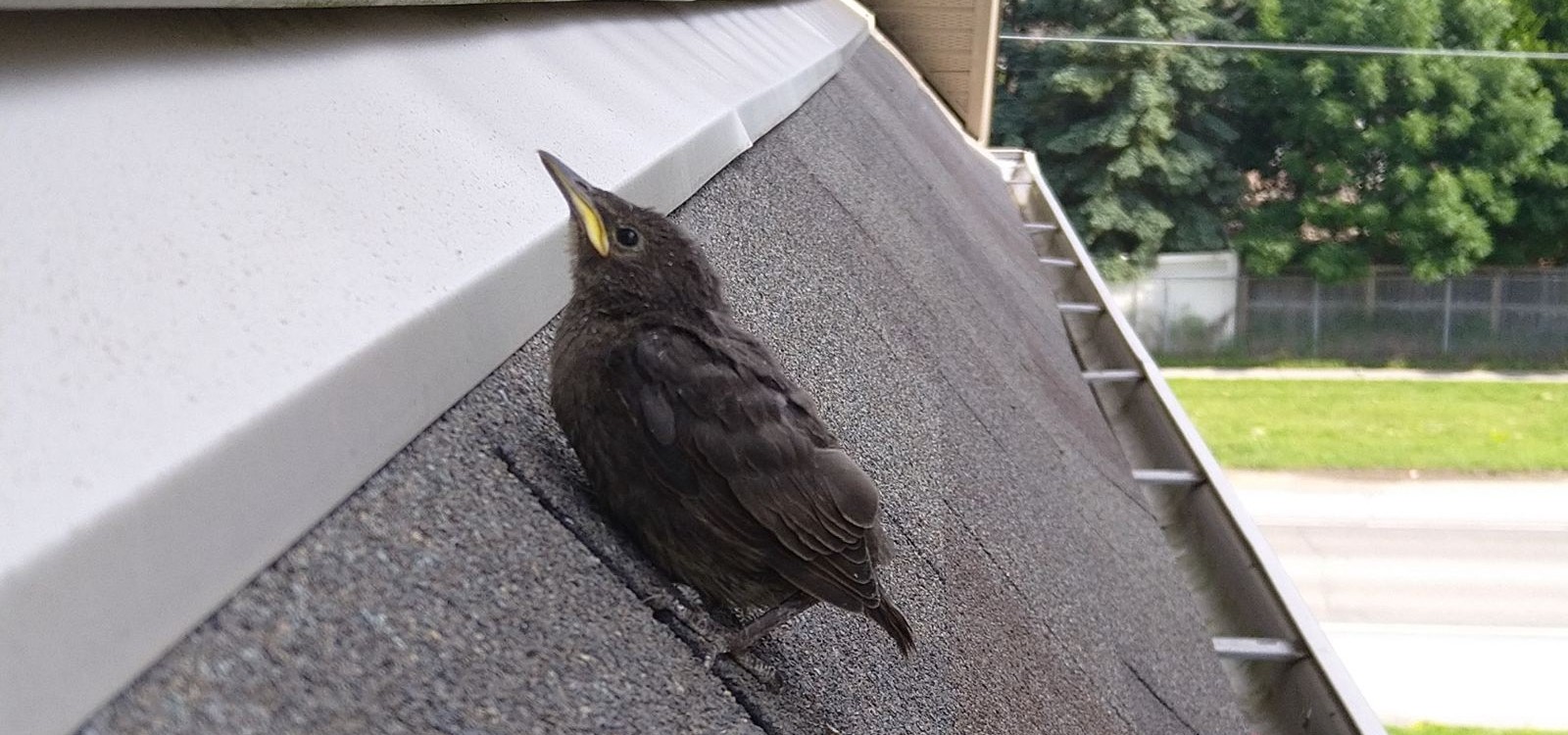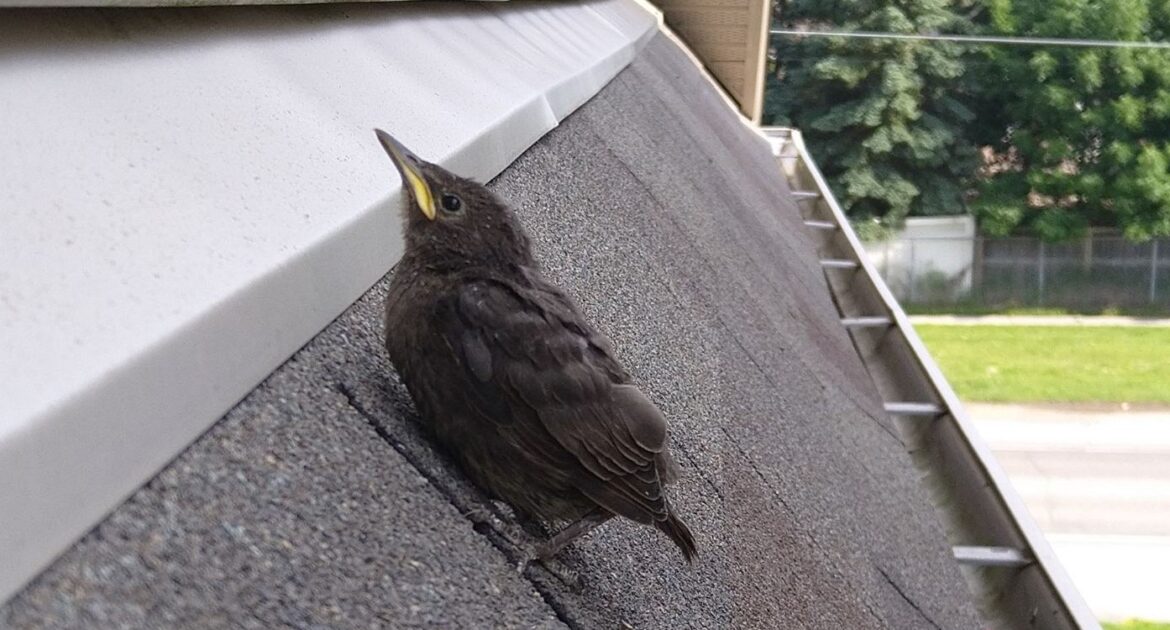Have you ever stopped to marvel at the incredible adaptability of our feathered neighbours? Urban bird behaviour is one of nature’s most fascinating success stories unfolding right before our eyes in cities like Kitchener and Waterloo. While we humans build our concrete jungles, birds don’t just survive—they evolve, adapt, and thrive in these manufactured environments.
At Skedaddle Humane Wildlife Control, we’ve spent over 30 years observing how birds transform their natural instincts to make the most of urban landscapes. From starlings nesting in bathroom vents to pigeons claiming rooftop territories, these winged city-dwellers have developed remarkable strategies to turn our habitats into their own.
Just as Kitchener’s Victoria Park offers a green haven for human visitors seeking respite from city life, urban environments create unique niches for wildlife, especially birds. The relationship between these animals and our urban spaces tells a compelling story of adaptation, resilience, and coexistence—sometimes harmonious, sometimes challenging for homeowners.
Let’s explore the fascinating world of city-dwelling birds and discover how they’ve mastered the art of urban living alongside us.
The Remarkable Adaptability of Urban Birds
Birds are among the most successful urban adapters in the animal kingdom. Their ability to adjust to city life goes far beyond simply finding new places to perch—it represents a profound shift in behaviour, diet, and even physical characteristics.
Behavioural Changes in City-Dwelling Birds
Urban environments have triggered several notable behavioural shifts in birds:
- Extended activity hours: City birds often extend their daily activities due to artificial lighting, singing and foraging well into the evening hours when their rural counterparts have settled down for the night.
- Altered migration patterns: Some species have reduced or completely abandoned migration as urban areas provide year-round food sources and milder winter conditions.
- Bolder personalities: Research shows city birds typically display greater boldness and reduced fear of humans compared to their rural counterparts—a trait that helps them exploit new opportunities in human-dominated landscapes.
- Nest location innovations: Urban birds creatively repurpose human structures—gutters become nesting shelves, vents transform into protected cavities, and building ledges substitute for cliff faces.
- Communication adaptation: To overcome urban noise pollution, many birds have changed their songs—singing at higher pitches or during quieter times to ensure their messages carry.
This remarkable flexibility is why starlings can successfully nest in bathroom exhaust vents while pigeons find perfect roosting spots on commercial building ledges. As we’ve observed in our wildlife removal work throughout Kitchener/ Waterloo, these adaptations make birds particularly successful at colonizing our homes and businesses—often leading to situations where homeowners need our expertise.
How Birds Adapt to Cities: A Surprising Evolution
The story of how birds adapt to cities goes deeper than just behaviour—it reflects potential evolutionary changes happening right before our eyes.
Dietary Flexibility: Urban Opportunists
City-dwelling birds have dramatically shifted their diets to take advantage of human food sources:
- From specialized to generalized diets: Many urban birds have broadened their food preferences, switching from specialized natural diets to anything available—including human food waste.
- Year-round foraging opportunities: Unlike natural environments where food availability fluctuates seasonally, cities provide consistent food sources through garbage, intentional feeding, and landscaped plants that produce berries and seeds year-round.
- Novel food exploitation: Urban birds learn to exploit entirely new food sources—from opening milk bottles to timing their appearance at outdoor cafés precisely when diners leave.
Physical Adaptations Emerging in Urban Birds
Perhaps most fascinating are the physical changes we’re beginning to document in urban bird populations:
- Beak modifications: Some urban birds are developing stronger beaks better suited to the foods available in cities.
- Wing structure changes: Researchers have noted subtle differences in wing shape between urban and rural populations, likely adaptations to the different flying challenges in built environments.
- Toxin tolerance: City birds often show higher tolerance for pollutants and toxins than their rural counterparts.
These adaptations highlight why birds have become such successful urban dwellers. At Skedaddle, we recognize that these adaptations also explain why persistent issues require professional knowledge to address effectively. Understanding these evolutionary changes helps us develop more effective, humane deterrent strategies tailored to modern bird behaviour.
Urban Bird Behaviour: Thriving Through Boldness
Perhaps the most striking characteristic of successful city birds is their remarkable boldness. This trait has become essential for survival and reproduction in environments filled with constant human activity.
The Bold Bird Advantage
Bold birds gain several advantages in urban settings:
- Prime territory acquisition: Bolder individuals claim the best nesting sites in competitive urban environments, often in or on human structures.
- Expanded feeding opportunities: Less fearful birds access food sources their shyer counterparts avoid—whether that’s foraging closer to pedestrians or investigating new food possibilities.
- Reproductive success: Studies suggest bolder urban birds often produce more offspring, potentially passing these adaptive traits to future generations.
This boldness creates challenges for homeowners, as these are precisely the birds most likely to nest in dryer vents, build homes in soffits, or establish colonies on rooftops. When birds display this confident urban behaviour around your property, it often signals potential conflicts that may require professional intervention.
The Most Successful Bird Species in Kitchener/ Waterloo
Not all birds adapt equally well to urban environments. Through our extensive experience in wildlife control throughout Kitchener/ Waterloo, we’ve identified the most common species that have mastered city living—often to the frustration of homeowners.
City Specialists
- Starlings: These highly intelligent birds are cavity nesters that frequently build nests inside kitchen and bathroom exhaust vents. They stuff these openings with dried grass, twigs, and other materials, posing serious fire hazards and blocking proper ventilation.
- House Sparrows: Aggressive competitors for nesting sites, house sparrows readily build nests in building crevices, gutters, and light fixtures. Their year-round presence makes them persistent urban residents.
- Pigeons: Masters of urban living, pigeons exploit building ledges that mimic their ancestral cliff habitats. Their ability to nest throughout the year when conditions are favourable enables them to quickly establish large populations on commercial buildings.
- Gulls: Increasingly common in urban areas, gulls have moved inland from coastal regions to take advantage of food waste and flat rooftops for nesting.
Each of these species presents unique challenges when they choose to make your property their home. At Skedaddle, we’ve refined our approach to each species based on their particular behaviours and nesting habits, ensuring humane and effective removal.
The Urban Pressure Cooker: Challenges Birds Face
While birds have shown remarkable adaptability to urban environments, city living isn’t without significant challenges for our feathered neighbours.
Environmental Hurdles for City Birds
Urban birds face numerous pressures:
- Habitat fragmentation: Natural spaces in cities exist as islands, disconnected from each other by roads and buildings, limiting movement and resource access.
- Pollution exposure: From air pollutants to light and noise pollution, urban birds contend with physiological stressors their rural counterparts never experience.
- Predator dynamics: Cities feature different predator profiles—fewer natural predators but more cats, raccoons, and other human-associated hunters.
- Artificial materials: Birds often incorporate potentially harmful man-made materials into their nests, from plastic string that can entangle nestlings to toxic materials affecting development.
These challenges create a complex environment where only certain species—typically those with specific adaptability traits—can thrive. Understanding these pressures helps explain why particular species become successful city dwellers while others struggle to adapt.
Confronted with these urban challenges, birds and humans frequently find themselves at odds. Whether it’s due to the noise, potential hazards, or property damage caused by nesting in inappropriate places, conflicts often arise. It is here that Skedaddle Humane Wildlife Control steps in, providing effective solutions that respect both the wildlife and the homeowners.
If urban birds are causing issues on your property, whether by nesting inconveniently or attracting other nuisances, do not hesitate to reach out to our team. With our experience and understanding of bird behaviour, we can ensure a safe and humane resolution, helping birds and people coexist more harmoniously in our vibrant city surroundings. Contact Skedaddle Humane Wildlife Control in Kitchener/ Waterloo today to learn more about our services and how we can help manage your wildlife concerns.




